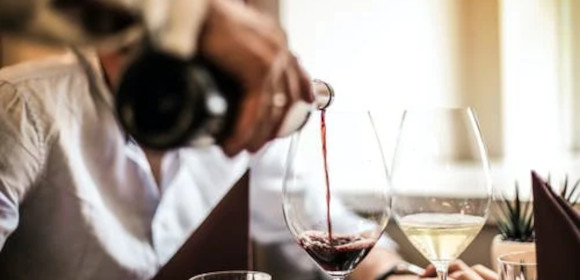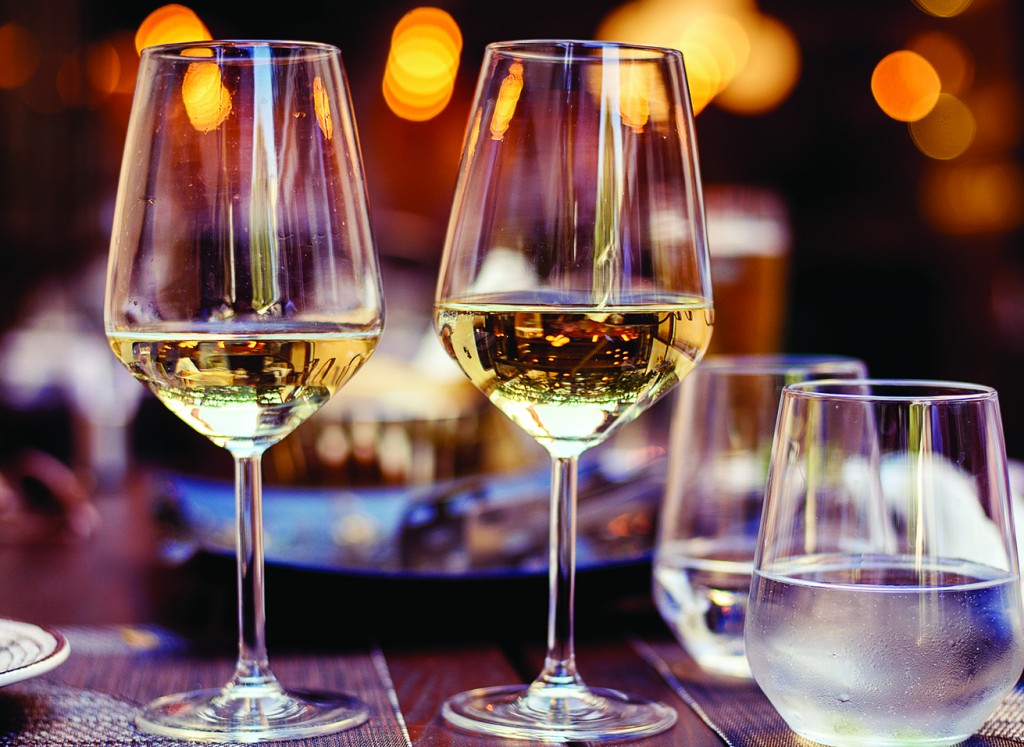Are you looking to elevate your next dining experience by hosting a wine tasting event at a restaurant? As a sommelier with years of experience in the industry, I understand the intricacies and nuances involved in orchestrating a successful wine tasting event in a restaurant setting. In this guide, I will share with you the essential tips, tricks, and best practices on how to turn an ordinary dining outing into a sophisticated and memorable wine tasting affair. Whether you are a wine enthusiast looking to expand your knowledge or a restaurant owner aiming to offer a unique experience to your guests, this blog will provide you with insights on creating a wine tasting event that will captivate and delight your attendees.
Choosing the Right Restaurant Venue
When hosting a wine tasting event at a restaurant, selecting the perfect venue is crucial for the success of the event. Here are some key factors to consider:
Location and Accessibility
Opt for a restaurant that is centrally located and easily accessible to your guests. Ensure there is ample parking space or good public transportation options available.
Ambiance and Decor
Choose a restaurant with a cozy and inviting ambiance that complements the wine tasting experience. Elegant decor and lighting can enhance the overall atmosphere.
Capacity and Layout
Consider the number of guests you expect and select a venue that can comfortably accommodate them. Ensure the layout allows for easy flow and interaction among participants.
Cuisine and Pairing Options
Check if the restaurant offers a menu that complements the wine selection or provides customizable pairing options. This can elevate the tasting experience for your guests.
/cdn.vox-cdn.com/uploads/chorus_image/image/62886152/whiskey_library2.0.jpg)
Selecting Wines for the Tasting
When hosting a wine tasting event at a restaurant, selecting the right wines is crucial to ensure a memorable experience for your guests. Consider the theme or focus of the event, the preferences of your guests, and the type of cuisine being served.
Consider the Theme and Focus
Start by deciding on the theme or focus of your wine tasting event. Whether it’s a regional showcase, a varietal comparison, or a vertical tasting of a specific winery, make sure the wines you select align with the theme to provide a cohesive tasting experience.
For example, if you are hosting a Spanish wine tasting event, you may want to include a variety of Spanish wines such as Tempranillo, Albariño, and Rioja to showcase the diversity of Spanish winemaking.
Guest Preferences and Dietary Restrictions
Take into account the preferences of your guests when choosing wines for the tasting. Consider whether they prefer red, white, or sparkling wines, and if there are any dietary restrictions or allergies to be aware of.
Offer a mix of wines to cater to different tastes, including options for both novice wine drinkers and connoisseurs. Provide a variety of styles and price points to appeal to a diverse audience.
Creating a Tasting Menu
When hosting a wine tasting event at a restaurant, the tasting menu plays a crucial role in enhancing the overall experience for the guests. A well-crafted tasting menu not only complements the wines being served but also showcases the culinary expertise of the restaurant.
Pairing Wines with Food
Pairing the right wines with the right dishes can elevate the tasting experience. Consider incorporating both complementary and contrasting pairings to provide a diverse range of flavors for the guests to enjoy. Guests can appreciate the interplay of flavors when the wine and food complement each other.
Offering a Variety of Tastes
Include a mix of light and heavy dishes on the tasting menu to cater to different palate preferences. From crisp salads to rich entrées, offering a variety of tastes ensures that there is something for every guest to enjoy. Incorporate seasonal ingredients to showcase freshness and variety.
- Starters such as cheese platters or charcuterie
- Main courses featuring seafood or grilled meats
- Desserts like creme brulee or chocolate fondant
Setting Up the Tasting Area
When hosting a wine tasting event at a restaurant, one of the key aspects is setting up the tasting area to create an inviting and organized space for guests to enjoy the experience. The ambiance and design of the tasting area play a crucial role in enhancing the overall event.
Choosing the Location
Begin by selecting a suitable location within the restaurant that offers enough space for guests to move around comfortably. Consider factors like lighting, ventilation, and noise levels to ensure a pleasant tasting environment.
It is important to create a cozy atmosphere where guests can focus on tasting the wines without distractions.
Setting Up Tables and Seating
Arrange tables in a way that allows guests to interact with each other while also providing enough room for wine glasses and tasting notes. Consider using tablecloths or elegant placemats to enhance the visual appeal of the setup.
- Ensure each guest has a designated seat with a wine glass and a spittoon for tasting purposes.
- Label each seat with the guest’s name or number to avoid confusion during the tasting session.
Guiding the Tasting Experience
When hosting a wine tasting event at a restaurant, it is crucial to guide your guests through the tasting experience to ensure they fully appreciate the wines they are sampling.
Setting the Tone
Start by setting the tone for the tasting. Create a welcoming ambiance with soft lighting and soothing music to enhance the overall sensory experience. Encourage guests to relax and focus on the flavors and aromas of the wines.Remember, the ambiance sets the stage for an unforgettable tasting event.
Understanding the Wines
Provide guests with background information about the wines they will be tasting. Discuss the grape varietals, winemaking regions, and tasting notes to help them appreciate the nuances of each wine. Knowledge about the wines enhances the tasting experience.
- Introduce each wine
- Explain the characteristics
- Encourage guests to discuss their impressions

Pairing Wines with Food
Pairing wines with food is an art that can elevate the dining experience to a whole new level. The key to successful food and wine pairing lies in understanding how the flavors of each complement or contrast with one another.
Complementary Pairings
Pairing a rich, full-bodied red wine with a juicy steak or a creamy pasta dish can create a harmonious balance on the palate. For a successful wine tasting event at a restaurant, consider offering red wine options like Cabernet Sauvignon or Malbec.
Contrast Pairings
Contrast pairings involve pairing opposites to create a dynamic flavor experience. For instance, pairing a crisp, acidic Sauvignon Blanc with a buttery lobster dish can create a delightful contrast.
- Tip: Consider offering white wine options like Chardonnay or Pinot Grigio for guests to explore contrasting pairings.

Enhancing the Atmosphere
Creating the perfect atmosphere is crucial for a successful wine tasting event at a restaurant. With the right ambiance, guests can fully immerse themselves in the experience and appreciate the nuances of each wine.
Lighting and Decor
Set the mood with dim lighting to create a cozy and intimate setting. Candles or fairy lights can add a touch of elegance to the table. Incorporate wine-themed decor such as vineyard-inspired centerpieces or rustic wine barrels to enhance the theme.
Music Selection
Choose background music that complements the wine tasting experience. Soft jazz or classical music can create a sophisticated atmosphere without overpowering conversation. Avoid loud music that may distract guests from tasting and discussing the wines.
Table Setup
Arrange tables in a way that encourages interaction among guests. Use wine glasses of different shapes and sizes to accommodate various types of wines. Provide tasting notes or guides at each setting to help guests navigate the tasting.
Encouraging Discussion and Feedback
When hosting a wine tasting event at a restaurant, encouraging discussion and feedback is crucial to create an engaging and interactive experience for your guests. One effective way to do this is by providing tasting cards for each wine served.
Interactive Tasting Cards
Include information on the year of the wine, the region it comes from, the grape varieties used, and any notable tasting notes. Encourage guests to jot down their own impressions and feedback.
Table Topics
Another strategy to promote discussion is by providing table topics cards with interesting wine-related questions or trivia. This can help break the ice and stimulate conversations among participants.
Frequently Asked Questions
-
- What are the key steps to host a successful wine tasting event at a restaurant?
- The key steps to host a successful wine tasting event at a restaurant include selecting a suitable venue, deciding on the wine theme, creating a tasting menu, promoting the event, and ensuring proper wine service and temperature.
-
- How can I choose the right wines for a wine tasting event at a restaurant?
- When choosing wines for a wine tasting event, consider the preferences of your guests, the theme of the event, and the food that will be served. It’s also important to select a variety of wines to cater to different tastes.
-
- What is the role of a sommelier in hosting a wine tasting event?
- A sommelier plays a crucial role in hosting a wine tasting event by curating the wine selection, providing insights and descriptions of the wines, guiding guests through the tasting experience, and ensuring that the wines are served and stored properly.
-
- How can I create a memorable experience for guests at a wine tasting event?
- To create a memorable experience for guests at a wine tasting event, pay attention to details such as ambiance, presentation of the wines, interactive elements like blind tastings or wine games, and engaging with guests to share knowledge and stories about the wines.
-
- What are some common mistakes to avoid when hosting a wine tasting event at a restaurant?
- Common mistakes to avoid when hosting a wine tasting event include not providing enough variety in the wine selection, serving wines at the wrong temperature, not pairing wines properly with food, and neglecting to engage with guests and make the event interactive and educational.
Final Thoughts
In conclusion, hosting a wine tasting event at a restaurant can be a sophisticated and enjoyable experience for both wine connoisseurs and beginners alike. By following the expert tips provided in this guide, you can create a memorable event that delights your guests and elevates their wine tasting experience.
Remember to carefully select the wines, create a conducive ambiance, and engage with your guests to enhance their understanding and appreciation of the wines being sampled. With attention to detail and passion for wine, you can successfully host a wine tasting event that leaves a lasting impression on everyone involved.
Cheers to creating unforgettable wine experiences at your restaurant!



